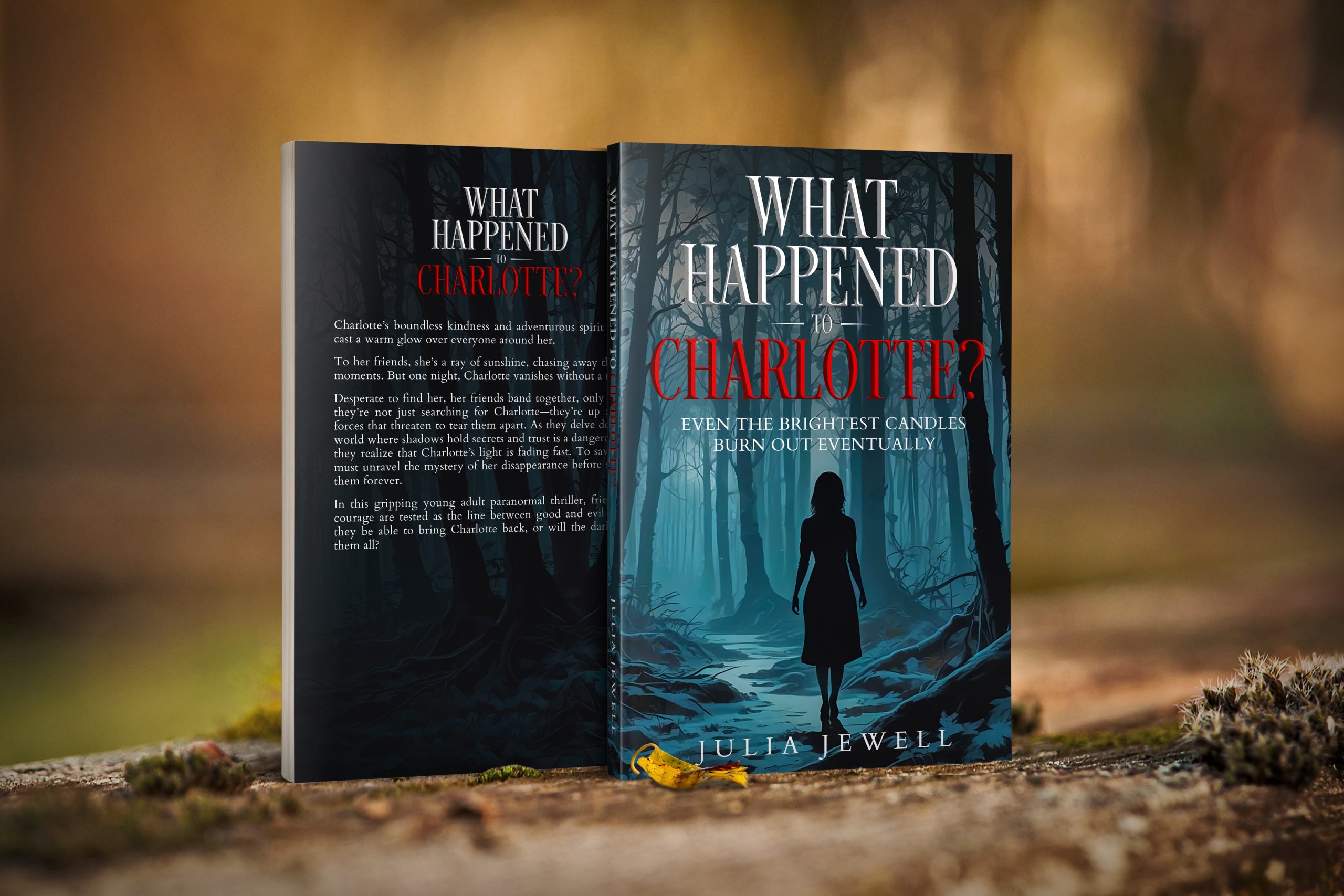Just American News got a chance to interview author E. MASSON in regard to her book ‘Symphony Of A Heart In Pieces’. We got insights into her book, her source of inspiration and much more.
Q. Welcome. It’s great to have you back on our platform. Your new novel explores the tension between love and wealth through the lens of Victoria’s journey. What drew you to write about the complexities of a relationship where one partner is from a wealthy background and the other isn’t?
Thank you for the warm welcome! I’m doing fantastic, and I’m excited to be here. The contrast between wealth and love can create intriguing conflict and tension , revealing how money impacts emotions, choices and values.
Q. Victoria’s decision to choose love over her family’s wealth and influence is a pivotal moment in the book. What do you think this decision says about the character’s strength, and how do you hope readers will relate to her struggle between love and societal pressure?
Victoria’s decision to prioritize love over her family’s wealth and influence showcases her remarkable inner strength and independence. It illustrates her courage in valuing her personal happiness and authenticity above societal expectations and material possessions. This crucial moment signifies her character growth and willingness to challenge societal norms, highlighting the sacrifices she’s prepared to make for true love. Many readers may relate to Victoria’s struggle, as they, too, have faced similar dilemmas in their lives—whether in choosing a career, selecting a partner, or simply remaining authentic under external pressures. Her journey resonates with anyone who has navigated the challenge of balancing personal desires with familial or societal expectations. By highlighting this relatable conflict, her story inspires readers to reflect on their own values and choices, encouraging them to pursue what genuinely matters.
Q. The theme of family dynamics plays a significant role in your novel. How did you go about developing the contrasting values between Victoria’s family and the family she builds with Jeff Richardson? Were there any real-life family dynamics you reflected on during the writing process?
In exploring the differing values between Victoria’s family and the one she builds with Jeff Richardson, I sought to highlight the conflict between traditional expectations and the pursuit of personal happiness. Victoria’s family symbolizes wealth, influence, and societal standards that often prioritize material success over emotional connections. In contrast, her relationship with Jeff celebrates love, authenticity, and mutual support, representing a more modern and equitable perspective on family dynamics. My narrative was inspired by a range of real-world family dynamics, particularly those where individuals confront and challenge established norms to create their own paths. By observing how various families tackle challenges, prioritize their relationships, and redefine what success means, I was able to shape the portrayal of Victoria and Jeff’s relationship. The stark contrast between the two families not only highlights the personal sacrifices Victoria is prepared to make for genuine love but also serves as a broader commentary on the importance of choosing a family based on shared values and emotional connections, rather than merely social standing or financial security. Ultimately, this contrast reflects the complexities of familial relationships and the ongoing journey many people undertake as they strive to balance their own desires with the expectations of their families.
Q. How did you approach portraying a strong, successful woman who also values family?
To depict a strong, successful woman who cherishes family, I focused on striking a balance between her career ambitions and her personal life. I emphasized her drive and achievements, portraying her as a capable leader and a source of inspiration. At the same time, I showcased her nurturing qualities, illustrating how she prioritizes family ties and invests time in fostering meaningful relationships. I also considered the obstacles she faces in reconciling these two parts of her life, highlighting the sacrifices and difficult decisions she encounters along the way. By showcasing her challenges and triumphs, I aimed to create a multidimensional character who illustrates the possibility of achieving success while holding family bonds dear. This duality highlights the complexities that many women navigate in their efforts to balance their careers and family life, making her both relatable and inspiring.
Q. For new or aspiring writers, especially those wanting to write romance or family dramas, what advice would you give about creating emotionally complex characters and relationships that feel authentic?
Creating emotionally intricate characters and authentic relationships, especially within the contexts of romance and family drama, requires a thoughtful approach and a deep understanding of human emotions.
Here are some insights for new or aspiring writers:
1. Establish Strong Character Foundations. Put in the effort to thoroughly develop your characters by exploring their backgrounds, goals, fears, and motivations. Understand the driving forces behind their actions and how their past shapes their present relationships.
2. Balance Strengths and Flaws Equip your characters with both commendable traits and vulnerabilities. Flaws foster relatability and authenticity, while strengths can create tension within relationships, especially when they conflict.
3. Forge Genuine Relationships. Ensure that relationships are layered and multifaceted. Illustrate their evolution over time, including moments of friction, conflict, and resolution. Consider how characters can support or challenge one another.
4. Utilize Dialogue Skillfully. Dialogue is a powerful means of revealing emotions and interpersonal dynamics. It should sound natural and reflect the unique personalities and backgrounds of the characters. Often, subtext can reveal deeper feelings than direct statements.
5. Emphasize Show, Don’t Tell.: Convey emotions through actions, body language, and internal thoughts instead of overt explanations. This approach fosters a deeper connection for readers with the characters.
6. Introducing Conflict. Emotional depth frequently emerges from conflict, both internal and external. Present challenges that force your characters to confront their feelings, values, and relationships.
7. Focus on Character Growth: Characters should evolve throughout the story. Highlight how their experiences alter them and influence their relationships, creating a sense of authenticity and satisfaction in their journeys.
8. Draw Inspiration from Real Life Pay attention to the emotions and relationships unfolding around you. Use these observations to create authentic interactions and reactions that resonate with readers.
9. Layer Emotions. Real emotions are complex and rarely one-dimensional. Characters might experience a mix of love, resentment, joy, and sadness simultaneously. Capture this emotional richness in their interactions and internal struggles.
10. Keep Readers Engaged. Achieve a balance of emotional highs and lows to maintain reader investment in your characters and their journeys, making the narrative vibrant and relatable. By focusing on these elements, writers can develop rich, complex characters and relationships that resonate with audiences and mirror the complexities of real emotional and familial dynamics.
Q. Do you have any writing rituals or habits that helped you stay grounded and creative while working on this book? Did your writing process change while developing such intricate family and relationship dynamics?
While I don’t have personal experiences to draw from, I can share some effective writing rituals and habits that many authors find helpful for staying grounded and creative, especially when developing complex family and relationship dynamics:
1. Setting a Consistent Writing Schedule. Many writers benefit from establishing a regular writing routine. This consistency helps build a habit, making it easier to enter a creative mindset.
2. Creating a Dedicated Writing Space: Having a specific, clutter-free area dedicated to writing can enhance focus and creativity. Personalizing this space with items that inspire can also be beneficial.
3. Journaling or Free Writing. Before diving into the narrative, some writers spend time journaling about their characters, exploring their backstories, and recording thoughts about relationships. This practice can clarify emotions and dynamics.
4. Character Mapping. Developing visual aids like character maps or relationship charts helps writers visualize connections between characters, ensuring that dynamics remain coherent and intricate.
5. Taking Breaks for Reflection. Stepping away from the writing can offer fresh perspectives. Engaging in different activities, such as walking or meditating, can inspire new ideas for character development and relationships.
6. Reading Widely.: Immersing oneself in books exploring family and relationship themes can spark creativity and provide insights into authentic portrayals of emotions and interactions.
7. Emotional Check-ins: Some writers conduct emotional check-ins, reflecting on their feelings and connecting with the emotions they want to convey through their characters. This practice helps in creating authentic dynamics.
8. Workshops and Feedback Groups: Participating in writing groups or workshops allows writers to share their work and receive feedback, which can be invaluable for refining character relationships and emotional depth.
9. Mind Mapping This technique can be effective for brainstorming ideas and plotting out complex relationship dynamics, allowing writers to see how different characters interact and evolve over time.
10. Embracing Flexibility in the Process: Acknowledging that the writing process is fluid can help writers feel more grounded. Being open to changing directions based on character development or emotional insights is key to crafting intricate narratives. By incorporating these habits and rituals, writers can enhance their creativity and stay centered, helping them navigate the complexities of family and relationship dynamics in their stories more effectively.
Q. Your novel touches on some deep themes—love, wealth, family expectations, and tragedy. How do you balance those heavy emotional elements with the lighter, romantic moments in your storytelling?
Balancing deep emotional themes with lighter, romantic moments is crucial for creating a well-rounded narrative. Here’s how I approach it:
1. Character Development: I ensure that my characters are complex and relatable, allowing their personalities to shine through even in heavy situations. This helps create moments of levity that feel organic and true to the characters.
2. Interweaving Humor: It’s important to incorporate humor that reflects the characters’ personalities and their relationships. Small, witty exchanges or situational comedy can provide relief without undermining the emotional weight of the story.
3. Pacing: I pay close attention to the pacing of my narrative. After exploring a heavy theme, I might slow things down to allow for moments of romance or joy, giving readers a chance to breathe and engage with lighter scenes.
4. Contrast and Juxtaposition: I leverage the contrast between heavy themes and lighter moments to highlight the emotional stakes. By placing a romantic moment against a backdrop of tension, it can feel even more poignant and impactful.
5. Subtlety in Transitions: I aim for smooth transitions between heavy and lighter scenes, ensuring that the shift feels natural. This might involve using the characters’ internal thoughts or ongoing conflicts to bridge the emotional gaps.
6. Emotional Resolution: I often tie lighter moments to the characters’ journeys towards resolving heavier themes. This way, the romantic moments feel earned and underscore the growth that occurs as they navigate their struggles. By thoughtfully integrating these elements, I strive to create a narrative that resonates on multiple levels, allowing readers to experience a range of emotions while remaining engaged in the story.
Q. When you’re not writing, what kinds of books do you enjoy reading? Are there any authors or novels that you feel influenced your style or themes while writing this book?
When I’m not immersed in writing, I indulge in a variety of genres that stimulate my imagination and enrich my storytelling. I particularly enjoy literary fiction, historical novels, and thought-provoking non-fiction. These genres allow me to explore different perspectives and deepen my understanding of the human experience. Several authors have profoundly influenced my style and themes. For instance, I admire the nuanced character development in the works of Jane Austen and F. Scott Fitzgerald, whose ability to weave societal critiques into their narratives resonates with me. Additionally, the emotional depth found in the novels of Toni Morrison often inspires me to explore intricate themes of identity and connection in my own writing. While reading, I consciously absorb the techniques and narrative structures employed by these writers, which inform my own approach and help me craft rich, layered stories. By engaging with their work, I continuously refine my voice and draw inspiration for the themes that permeate my writing.
Q. The book raises the question of whether love can triumph in a world obsessed with wealth. What message or takeaway do you hope readers will have about the relationship between love and money by the time they finish your book?
By the conclusion of my book, I aspire for readers to develop a nuanced comprehension of the intricate interplay between love and wealth. Although material riches can impose obstacles and skew priorities, authentic love possesses the remarkable ability to surpass these worldly distractions, revealing the essence of what truly holds value in life. I hope readers come to understand that meaningful relationships are rooted in trust, empathy, and shared experiences, rather than contingent upon financial standing. Ultimately, my objective is to illustrate that while money may afford comfort and convenience, it is love and genuine human connection that yield enduring fulfillment and a profound sense of purpose.
Q. Looking ahead, do you have any future projects planned? Will you continue exploring similar themes, or are there other storylines or genres you’re eager to dive into next?
Absolutely! I have some thrilling projects lined up for the future. While I’ll be continuing to delve into themes akin to those in my current work—like the intricacies of human relationships and the influence of love amidst societal pressures—I’m also excited to explore new storylines and genres. The prospect of experimenting with varied narrative styles and settings is quite invigorating. Whether it’s immersing myself in magical realism or embarking on a historical drama, I’m eager about the possibilities on the horizon and the chance to captivate readers with fresh viewpoints and compelling storytelling.
About the book: E. Masson’s new novel, Symphony of a Heart in Pieces, offers a poignant examination of love, family, and the influence of wealth. This compelling story delves into a woman’s life who must choose between following her heart and adhering to her family’s expectations.
Symphony of a Heart in Pieces is available for purchase on Amazon. For more information about E. Masson and her works, visit www.authoremasson.com.











